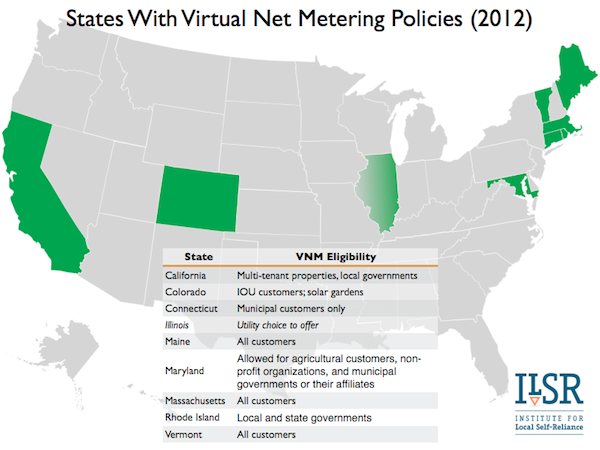![]() Net metering is a common distributed renewable energy policy in the United States, allowing individuals to “turn back” their meter (and reduce their electric bill) by generating on-site electricity. But utility accounting systems typically prevent people from sharing the output from a single, common “community” solar or wind project.
Net metering is a common distributed renewable energy policy in the United States, allowing individuals to “turn back” their meter (and reduce their electric bill) by generating on-site electricity. But utility accounting systems typically prevent people from sharing the output from a single, common “community” solar or wind project.
Virtual (or group or neighborhood) net metering is the solution. This rule allows utility customers to share the electricity output from a single power project, typically in proportion to their ownership of the shared system. For community renewable energy projects, typically relying on offsetting electricity at the retail price, virtual net metering is essential.
The following map illustrates which states (as of August 2012) support virtual net metering.
There’s some hope for expansion. The California legislature recently debated expanding virtual net metering to all customers, but the bill failed in late 2012. Other states have also considered virtual net metering legislation.
There are other solutions, too, that get away from net metering entirely. Under a CLEAN Program, distributed renewable energy projects have a separate meter, so that consumption and production are independent. In 14 states, individuals or groups can install a community solar project, get a good price for their electricity and share the revenue (rather than, as with virtual net metering, sharing electricity bill credits). All participants pay for their own electricity use separately, as do regular utility customers.
A CLEAN Program has some other advantages, but when it comes to simplifying the path for community renewable energy, virtual net metering is a good step in the right direction.



